Saffron is particularly special for us; its magical scent along with its unique flavour inspires us each day and reveals a world of possibility in the kitchen.
We invite all brave souls who are keen to share their culinary secrets! If you have something delicious on your mind, don't hesitate to share it at [email protected] Let's show our appreciation for all those incredible cultures who dedicate their time and effort towards tantalising taste buds!
For now, love yourself and enjoy this one ...
Whether you're an experienced gardener or just starting, growing your own herbs and vegetables can be a rewarding experience. Not only does it provide you with fresh, flavorful ingredients, but it also allows you to connect with nature and enjoy the satisfaction of nurturing plants from seed to harvest. In this post we'll explore the planting, growing, and culinary uses of six delicious plants: Rainbow Swiss Chard, Arugula, Sweet Pea, Strawberries, Parsley, and Chives.
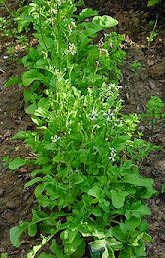
Planting:
Arugula prefers cool weather and grows best in well-draining soil. Plant seeds
¼ inch deep and 1 inch apart in rows spaced 6-12 inches apart. It can be grown
in full sun to partial shade.
Growing: Keep the soil
consistently moist, but avoid overwatering as it can lead to root rot. Arugula
grows quickly and can be harvested in as little as 4 weeks. Harvest by cutting
the leaves when they are young and tender, before the plant starts to flower.
Using: Arugula has a
peppery flavor that adds a delicious kick to salads, sandwiches, and pasta
dishes. It can also be used as a garnish for soups and pizzas.
4 cups
arugula leaves washed, drained and trimmed
1 pound uncooked rigatoni or other small pasta
2 cups chopped fresh or canned tomatoes
3 garlic cloves pressed or minced
2 tablespoons olive oil
1 bay leaf
2 tablespoons chopped fresh basil or 2 teaspoons dried
salt & red or black pepper to taste
Tear
arugula into generous bite-sized pieces. Lay the leaves in a large, heat
resistant, shallow serving dish. Cook pasta in a large pot of boiling water
until it reaches that barely tender stage. Remove and drain. While the pasta is
cooking prepare this easy tomato sauce: Heat olive oil and stir garlic around
until softened and fragrant. Add tomatoes and seasonings and heat to a simmer.
Remove bay leaf. Pour the hot, drained steaming pasta, over the bed of
arugula. Spread the tomato sauce over the pasta. Let a few bright green
leaves show around the edges of the pasta. Do not toss together. Serve with
grated parmesan cheese. Serves 4-6.
Chives
Planting:
Chives are a perennial herb that grows well in containers or in the ground.
Plant them in well-draining soil in a sunny location. Space the plants 6-8
inches apart in rows spaced 12 inches apart. They can be started from seed, but
I recommend getting nursery plants to be able to harvest sooner.
Growing: Keep the soil
consistently moist and fertilize yearly with a balanced fertilizer. Harvest the
leaves as needed, cutting them down to the base of the plant. Chives can be
harvested throughout the growing season.

Using: Cut the flowers in spring and use in salads or to create onion flavored vinegar. Chives have a mild onion flavor that pairs well with a variety of dishes. Use them fresh as a garnish or add them to salads, soups, and omelets for extra flavor.
Spring Herb Popcorn
- 1/2 cup popcorn kernels
- 2 tbsp butter melted, can sub olive oil
- 1/4 cup fresh dill chopped
- 1/4 cup fresh chives chopped S
- Sea salt to taste
Pop the popcorn kernels using an air popper or other device. When the popcorn is finished, transfer to a bowl. Drizzle with melted butter or olive oil. Shake the bowl to distribute the butter or oil more evenly. You will need to do this before adding the herbs so that they have something to stick to and won't fall to the bottom. Add the fresh herbs and shake the bowl again. Add sea salt to taste, and enjoy
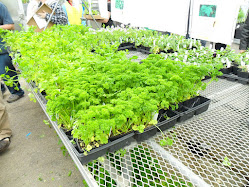
Parsley
Planting: Parsley
is a biennial herb that is best grown from nursery plants, as the seed is difficult
to germinate. Plant plants 6-8 inches apart in rows spaced 12 inches apart.
Parsley prefers well-draining soil and full sun to partial shade.
Growing: Keep the soil moist,
but once a starting fertilizer, it should do well if the soil is rich without
any additional fertilizer. Harvest the outer leaves as needed, leaving the
inner leaves to continue growing. Parsley can be harvested throughout the
growing season. Although a biennial, it should be treated as an annual and
removed from the garden at the end of the season.
Using: Parsley is a versatile herb to use fresh or
dried. Fresh parsley is very rich
in Vitamin A and potassium. It is moderately rich in Vitamin C, calcium, folic
acid, and phosphorous. It is also a good source of dietary fiber. It adds
flavor to soups, stews, sauces, and salads. It can also be used as a garnish
for a decorative touch and to freshen breath.
Creamy Parsley Salad Dressing
- 1/2 cup vegetable oil
- 1/3 cup finely chopped fresh parsley leaves
- 3 scallions, finely chopped
- 1/2 tsp salt
- 1/2 tsp pepper
- 2 Tbls sour cream (or plain yogurt)
Combine all ingredients except sour cream in food processor, blender or bowl and mix well. With machine running (or using whisk if preparing by hand), slowly add sour cream, blending thoroughly. Refrigerate in an airtight jar and shake well before serving.
Rainbow Swiss Chard
Planting:
Rainbow Swiss Chard is a cool-season crop that thrives in well-draining,
nutrient-rich soil. Plant seeds ½ inch deep and 2-3 inches apart in rows spaced
12-18 inches apart. Ensure the plants receive at least 6-8 hours of sunlight
per day.
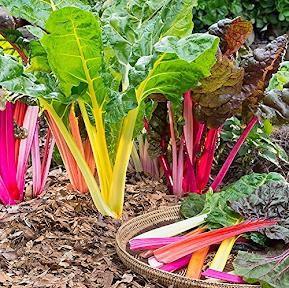
Using: Rainbow Swiss
Chard can be used in a variety of dishes, from salads and soups to stir-fries
and omelets. Its colorful stems are edible and add a vibrant touch to any dish.
- 1 bunch of Swiss chard, approximately 6 to 8 stems
- 1 tablespoon olive oil
- 3 garlic cloves, minced
- ¼ cup water
- kosher salt, to taste
Prep the Swiss chard. Remove the stems at the
bottom of the leaves and slice them up. Roll the leaves into a cigar-like shape
and slice across horizontally into one-inch wide strips. Cook the garlic and
stems. Heat the olive oil in a sauté pan on medium heat. Add the minced
garlic and sauté for 30 seconds. Then, add the water and chard stems and cook
for 1 to 2 minutes, until softened. Add the leaves. Cook for an additional
4 to 5 minutes, until the chard leaves wilt down. Before serving, sprinkle with
kosher salt, to taste.
Strawberries
Planting: Strawberries are
perennial plants that can be grown in containers or in the ground. Plant them
in well-draining soil in a sunny location. Space the plants 12-18 inches apart
in rows spaced 2-3 feet apart. There are three types: June-bearing strawberries
produce a large, concentrated crop in mid-June to early July; Ever-bearing
types produce two crops, one in early summer and the second in early fall; Day
neutral plants produce fruit throughout most of the growing season.
Growing: Keep the soil consistently moist and mulch around the plants to suppress weeds and retain moisture. Remove any runners to encourage the plants to focus on fruit production. Harvest the berries when they are fully ripe and red. The June-bearing produce the largest yield per season, but in a short period of time. The plants begin flowering in May with fruit appearing about four weeks later.

Using: Strawberries are delicious eaten fresh, but they can also be used in a variety of desserts, jams, and sauces. They pair well with chocolate, cream, and other berries.
Lemony Strawberry Butter
• 1/2 cup (1 stick) softened unsalted butter
• 1 1/2 tablespoons sugar
• 4 tablespoons minced strawberries
• 1 teaspoon minced fresh lemon balm
• 1 teaspoon minced fresh lemon verbena
Combine all the ingredients. Keep refrigerated for up to 5 days. it is great on scones and biscuits..
Sweet Pea
Planting: Sweet
Peas are a climbing plant that requires support such as a trellis or fence.
Plant seeds 1 inch deep and 2 inches apart in rows spaced 12 inches apart. They
prefer full sun but can tolerate partial shade.
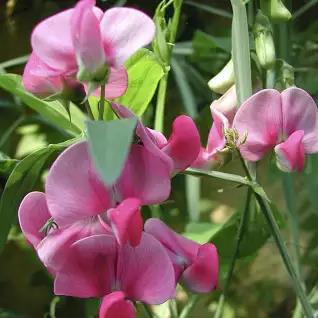
Growing: Keep the soil consistently moist and provide support for the vines to climb. Pinch off the growing tips of the vines to encourage branching and more flowers. Harvest the pods when they are young and tender for the best flavor.
Using: Sweet Peas can be eaten raw or cooked. Add them to salads, stir-fries, or pasta dishes for a sweet and crunchy texture.
- 1 clove garlic, minced
- 2 cups fresh green peas
- 3 tablespoons lime juice
- 3 tablespoons olive oil
- ¼ small red onion, finely chopped
- 2 jalapeños, minced
- ⅓ cup chopped cilantro
- tortilla ships, raw vegetables, or crackers
Sprinkle a pinch of salt over garlic and mash into a paste
using the side of your knife. Add mashed garlic to a food processor with the
peas, lime juice, and a generous pinch of salt. Pulse mixture until a coarse
purée forms, scraping with a rubber spatula occasionally. With motor running,
stream in olive oil and blend until smooth. Taste, and adjust seasonings. Add jalapeño, onion, and cilantro. Pulse just to incorporate. Serve guacamole
with chips, vegetables, or crackers.
Growing your own herbs and vegetables can be a fun and
rewarding experience. Whether you have a large garden or just a few pots on a
sunny balcony, these six plants are sure to add beauty and flavor to your home.
Experiment with different varieties and recipes to discover the joys of
homegrown produce!
Title: Six Great Plants for Spring - how to grow and use them!
Sourced From: backyardpatch.blogspot.com/2024/02/six-great-plants-for-spring-how-to-grow.html
Published Date: Mon, 26 Feb 2024 21:08:00 +0000
Frequently Asked Questions
What are healing flowers?
Healing flowers are plants that promote peace and tranquillity. They help us unwind after a stressful day and make us feel more relaxed.
They also help us connect to our inner selves and reconnect with nature.
These beautiful blooms are used for meditation, prayer, and contemplation.
We call hundreds of varieties of flowering plants ‘healing’ because they provide such a fantastic experience.
This list includes roses, lilies, irises, daffodils, peonies, tulips, hyacinths, and many more.
But there are two species that I find particularly special. These are the Geranium and Lilium.
Geraniums are very easy to grow and come in various colors. Liliums are also known as lily-of-the-valley, which means 'lily' and 'valley.' Both of these species are popular garden flowers.
Healing flowers are often found growing near water. They are said to bring peace and calmness to those who meditate with them.
In ancient times, people would light candles in flower petals to symbolize the sun. This way, they could honor the sun without needing to go outdoors.
Some say that when you look at these flowers, you may see angels dancing.
What are the disadvantages of using herbs?
Herbs are a great way to keep your body healthy because they contain vitamins, minerals, antioxidants, enzymes, amino acids, phytonutrients, polyphenols, flavonoids, terpenes, essential oils, carotenoids, sterols, and sterolins. Some even contain cannabinoids.
But there are also lots of side effects associated with herbal remedies. For example, taking too much herb could cause liver damage or even death. Herbal supplements may interact with prescription drugs, which means that they might affect how well the drug works.
Some herbs can interfere with blood clotting, while others may increase bleeding when taken with anticoagulants (blood thinners).
There are also safety concerns for pregnant women and children.
The bottom line is that herbs aren't safe for everyone. If you're considering trying them out, do your homework. Look up each product's side effects and warnings and read reviews online.
What is the difference between "regular" and smoked paprika powder?
Regular Paprika Powder (Piment d'Espelette) is an essential ingredient for our recipes. We use it for its intense flavor and color. It's also used as a spice and seasoning agent. Smoked Paprika Powder (Paprika Chorizo) adds a smoky taste and aroma to dishes. Both types of Paprika Powder come from Spain, where they grow the best peppers in the world.
Smoked Paprika Powder (Chorizo Paprika) is made from red peppers, which are dried slowly in special ovens. This gives them a rich flavor. They are then ground and mixed with salt, garlic, and spices.
Regular Paprika Powder (Espelette Paprika) is made by grinding green bell peppers without additives.
Statistics
- The herbs market is highly competitive, with over 1,000 herb suppliers and over 15,000 herbs products available in the United States alone.
- Studies have shown that cinnamon can lower fasting blood sugars by 10-29% in diabetic patients, which is a significant amount (9Trusted Source10Trusted (healthline.com)
External Links
[TAG28]
[TAG30]
- Ashwagandha | Memorial Sloan Kettering Cancer Center
- Grape Seed | Memorial Sloan Kettering Cancer Center
[TAG33]
- Peppermint oil (Mintoil®) in the treatment of irritable bowel syndrome: A prospective, double-blind placebo-controlled randomized trial
- Curcumin reverses the effects of chronic stress on behavior, the HPA axis, BDNF expression, and phosphorylation of CREB
[TAG36]
- Antioxidant capacity of 26 spice extracts and characterization of their phenolic constituents - PubMed
- Cinnamon: A Multifaceted Medicinal Plant - PMC
How To
How to use herbs safely?
Many people think that herbs should only be used under medical supervision because they believe that some herbs are poisonous. However, this is not true.
Many herbs have long histories of safe use. For example, garlic has been used for thousands of years to fight infections. It's also been shown to lower cholesterol levels and reduce high blood pressure.
However, if you're pregnant or nursing, avoid taking certain herbs. You should also avoid them if you suffer from allergies or sensitivities to herbs.
You can do several things to ensure you get the best results from your herbs and supplements. First, always read labels before consuming anything containing herbs or spices. Second, take the lowest dose recommended on the label. Third, don't use more than one supplement at any given time. Fourth, talk to your doctor about how to combine specific herbs and supplements. Finally, keep track of your consumption to know whether you need to adjust your dosage.
Resources:
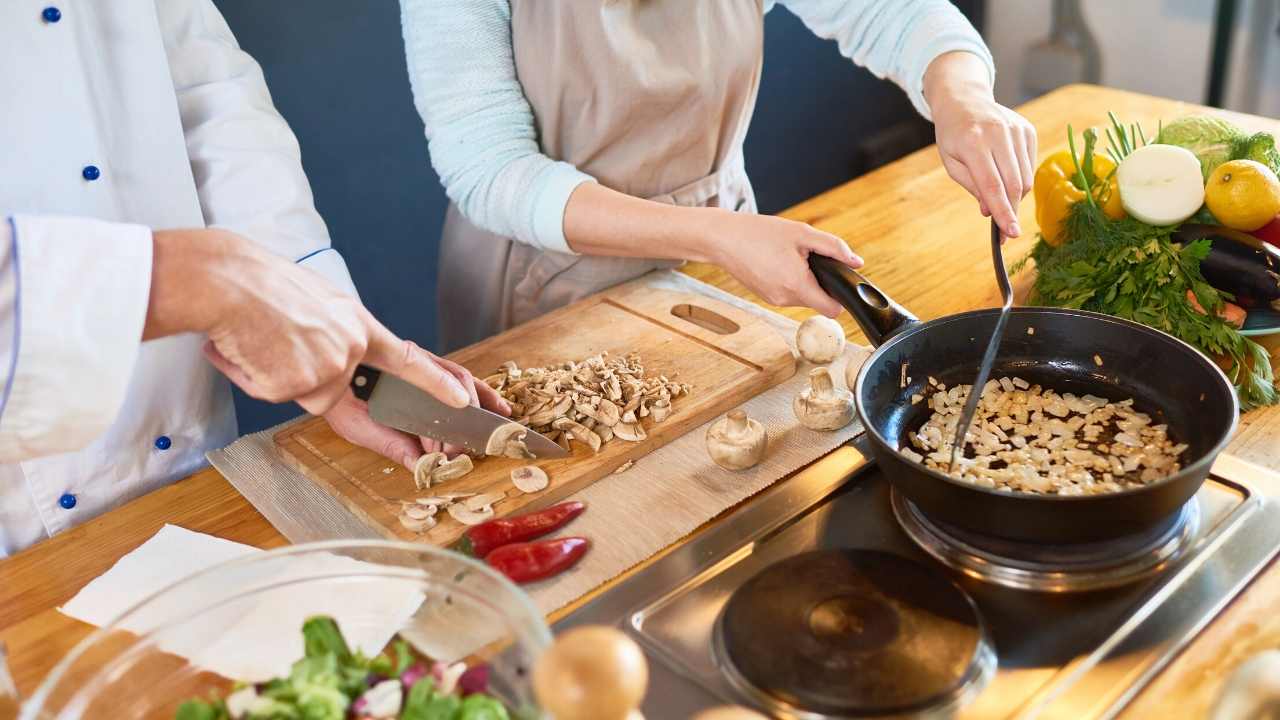 |
[TAG39]In this video we are starting out seedlings for our winter growing in the Tower Garden and we're taking you along for the journey! We'll show you just how easy |
 |
[TAG40]Hope you enjoyed this video and thank you for your support. Don’t forget to like, share and subscribe. PLEASE FOLLOW ME IN FACEBOOK https://www.facebook |
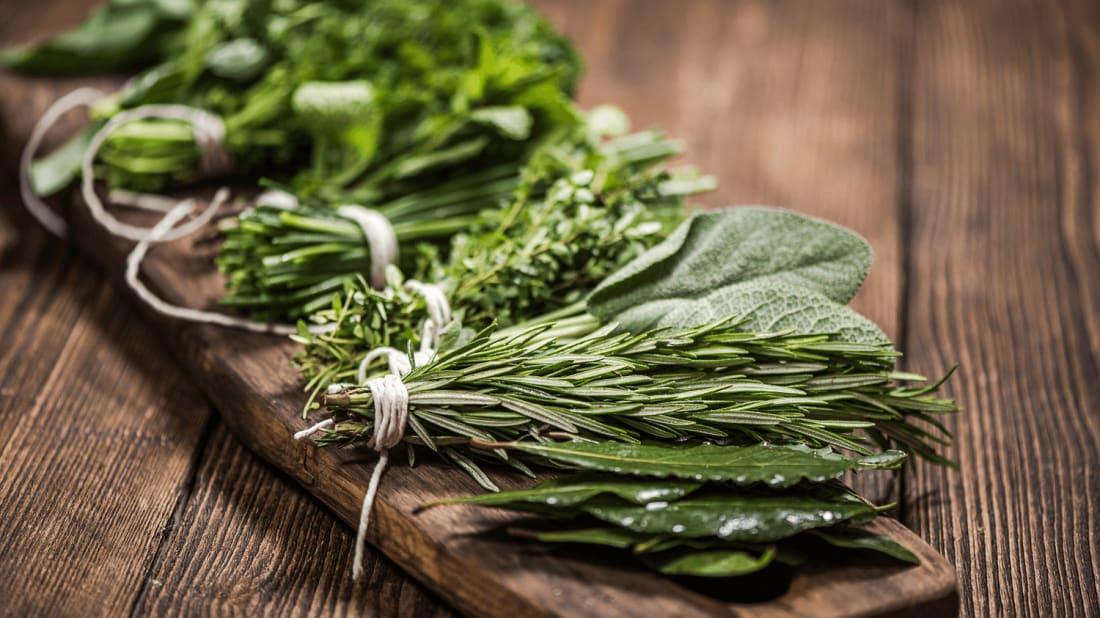 |
[TAG41]Learn herbs from respected professional herbalists offering world-class herbalist training. The NEW Professional Herbalist Course includes courses on over 600 |
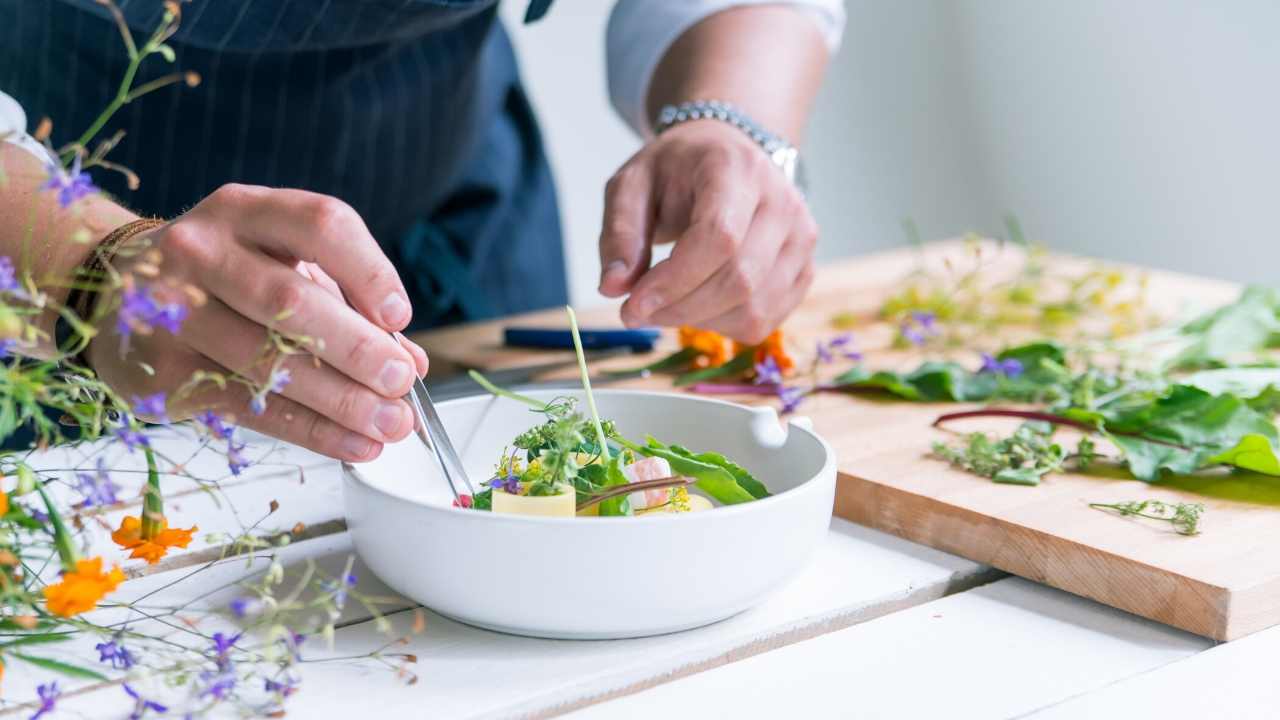 |
[TAG42]Who was the Marble Looking Man? Paul Sinclair shares his accounts of unusual and strange happenings in an around East and North Yorkshire. We now have |
 |
[TAG43]COFFEE MOANING the PODCAST ON APPLE PODCASTS: https://podcasts.apple.com/gb/podcast/coffee-moaning/id1689250679 ON SPOTIFY: |
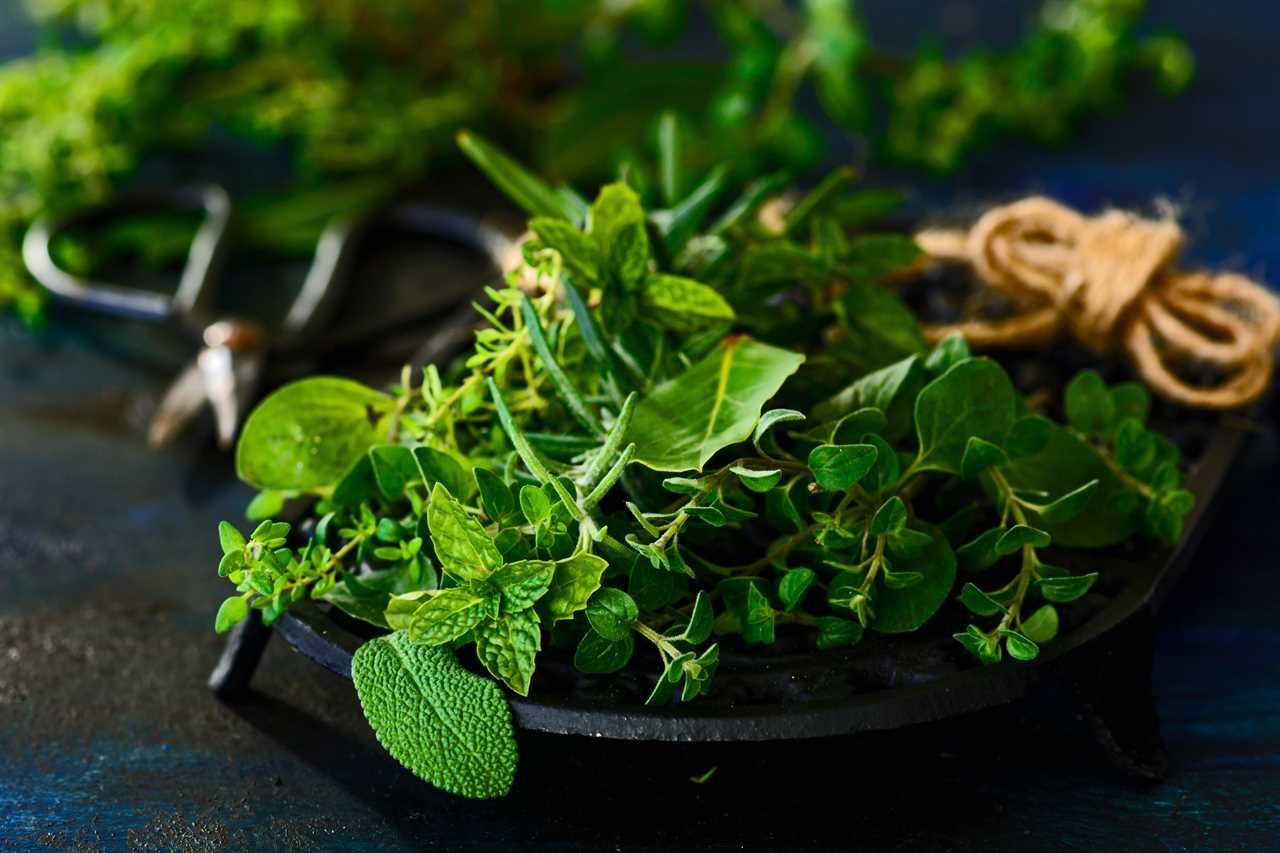 |
[TAG44]Find out more about herbs and how to use them |
 |
[TAG45]Are you eating healthy bread? If so, this video is a must-watch before you take another bite of those seemingly innocent slices. Bread might be a staple, but |
 |
[TAG46]Patrick Bet-David, Adam Sosnick, Tom Ellsworth and Vincent Oshana discuss Bill Maher's appearance on Roseanne Barr's podcast where he denies knowing MK Ultra, |
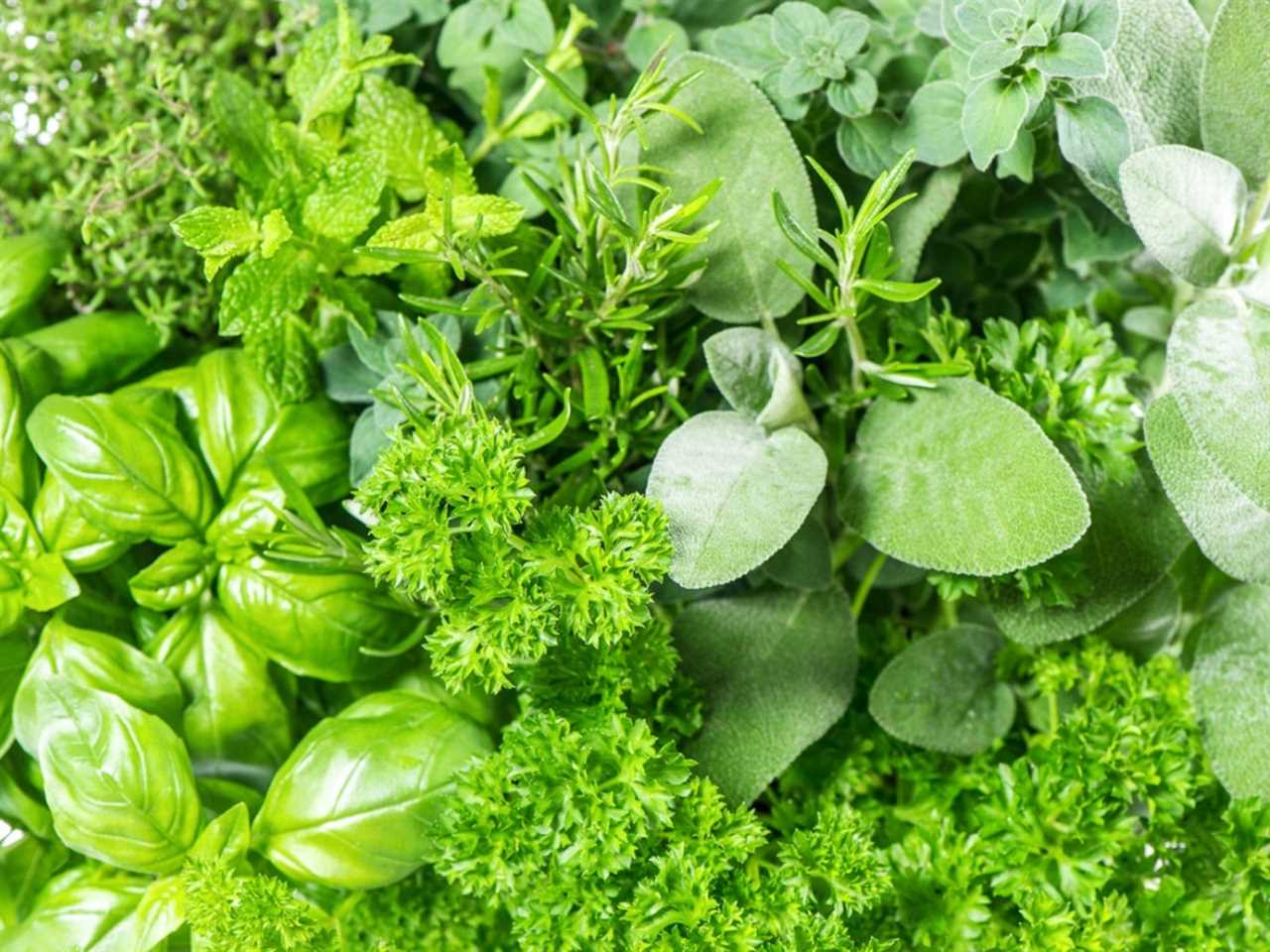 |
[TAG47]Like life, tea is what you make of it and The Cup of Life helps individuals enjoy tea in more than one way. Join me on my tea adventures through my blog! |
 |
[TAG48]Use Code THOMAS25 for 25% off Your First Order from SEED: https://www.seed.com/thomasyt Obesity Pandemic - Willpower vs Genes vs Environment This video |
 |
[TAG49]Harvesting self-grown vegetables - bursting with emotions when the old lady handed over the red book Thank you for watching my video. Wishing you good health, |
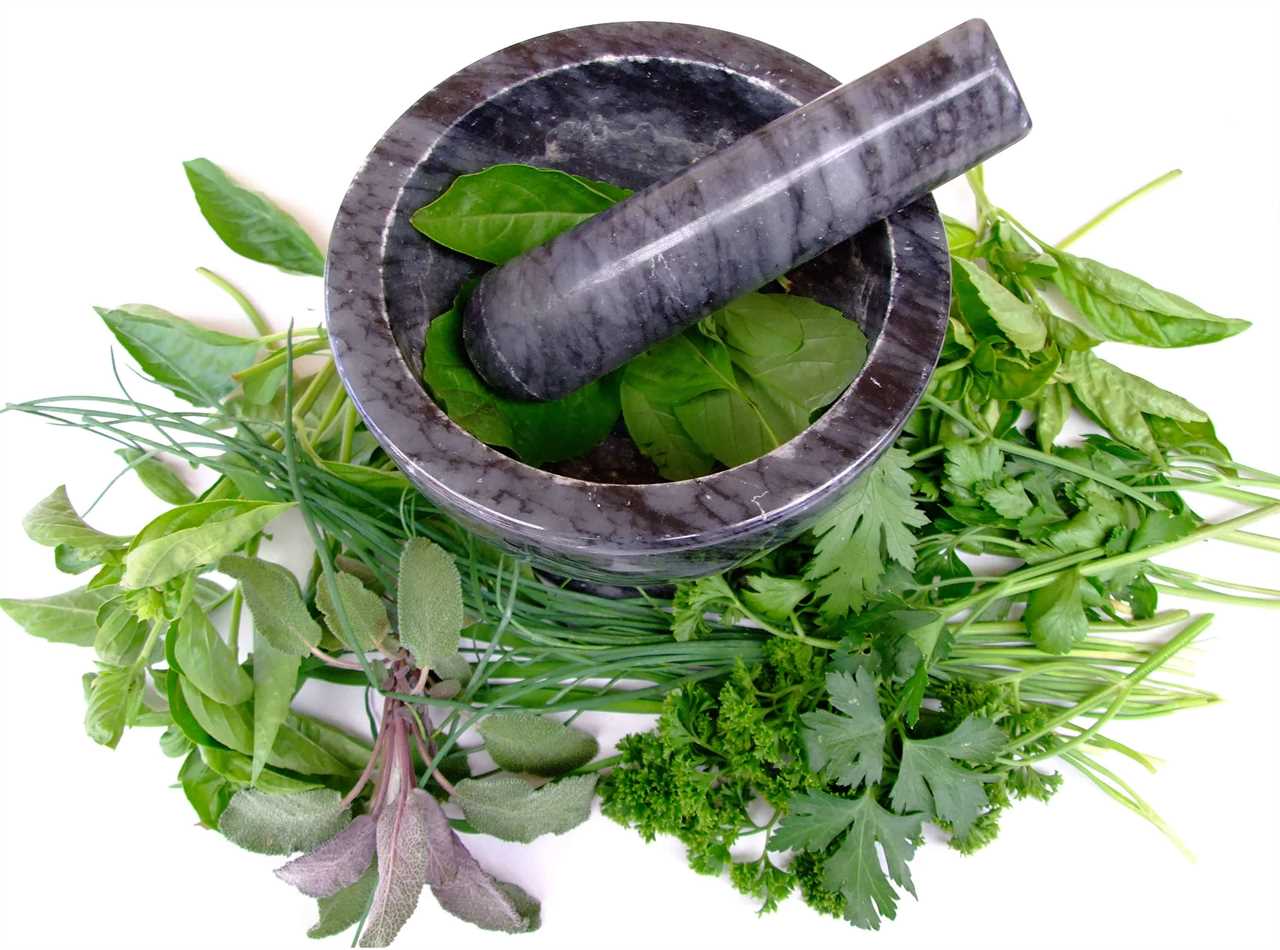 |
[TAG50]A tea assessment platform that rates teas based on objective quality markers and a sensory evaluation resulting in a list of the best teas produced each year. |
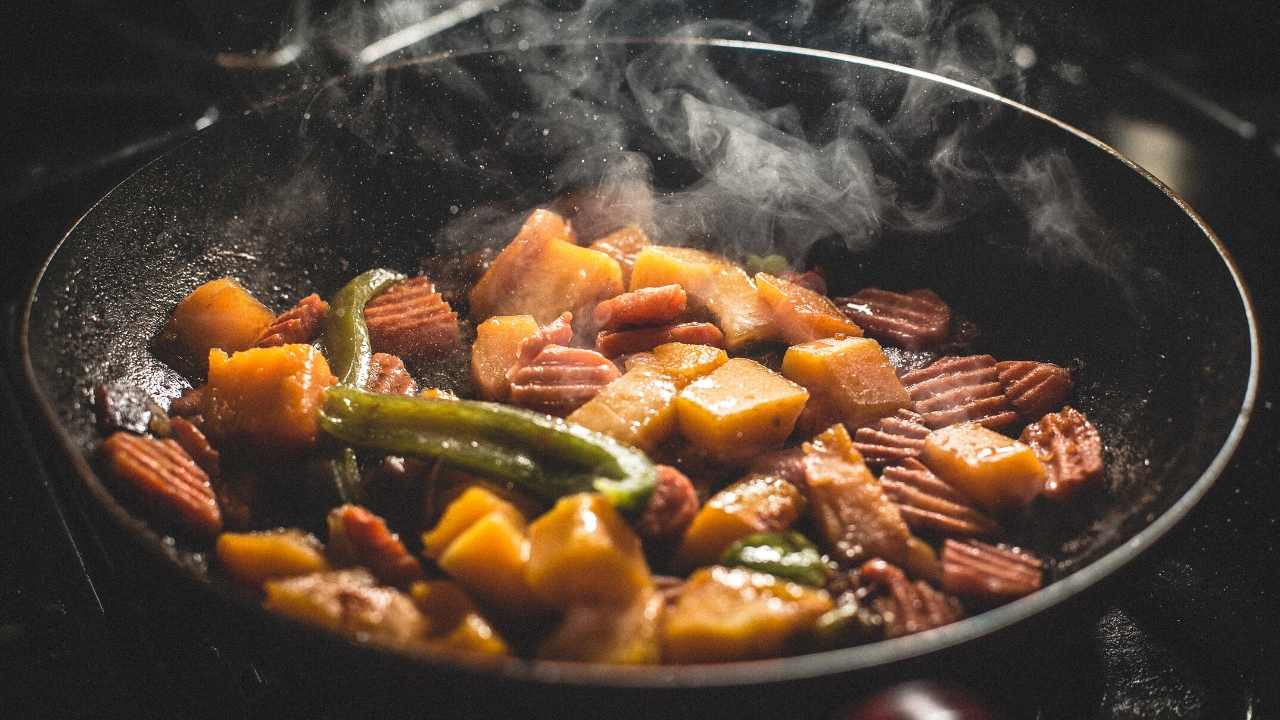 |
[TAG51]In This Video I'm Gonna Show You How To Find And Farm All 7 Herbs In Terraria! Enjoy ! :) #terraria #guide #tutorial |
 |
[TAG52]Former President Trump in recent remarks is now working to portray President Biden as a threat to democracy, saying Biden 'is the destroyer of American |
.png)





